A beige bedroom succeeds when it feels calm yet full of life—think sun-washed sand accented by texture, lighting, and small jolts of contrast. The 20 ideas below show how to layer materials, colors, and layouts so your neutral space never drifts into bland. Designers praise beige for its versatility, allowing everything from coastal driftwood to glam metallics to shine without visual clutter. Ready to see how a single hue can flex across cottage, Japandi, and minimalist looks? Explore the inspirations and pick the combinations that echo your style.
1. Layer Natural Textures for a Tactile Beige Bedroom
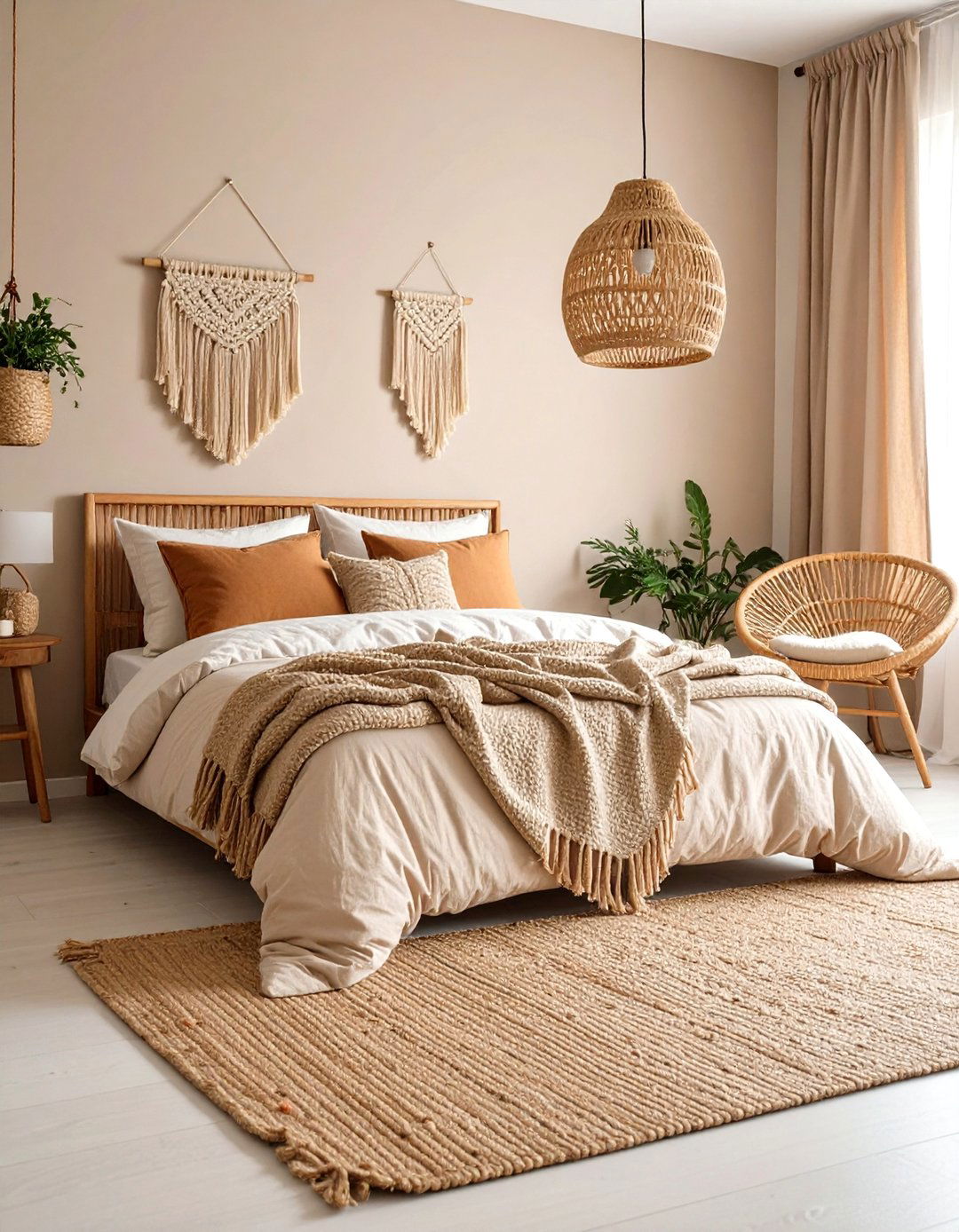
A softly tactile room begins with layering: start with a matte beige wall, then add linen drapes, a woven jute rug, and a rattan bedside chair to create depth without color overload. Natural fibers breathe and regulate humidity, helping the bedroom stay comfortable year-round. Mix chunky knits with smoother cotton to keep the eye moving and prevent monotony. Finally, anchor the palette with one statement texture—perhaps a raw-edge seagrass pendant—to draw attention upward and balance heavier pieces below. Each material’s subtle shade variation keeps the beige story cohesive while adding unmistakable warmth.
2. Paint One Deep-Beige Accent Wall to Elevate Drama
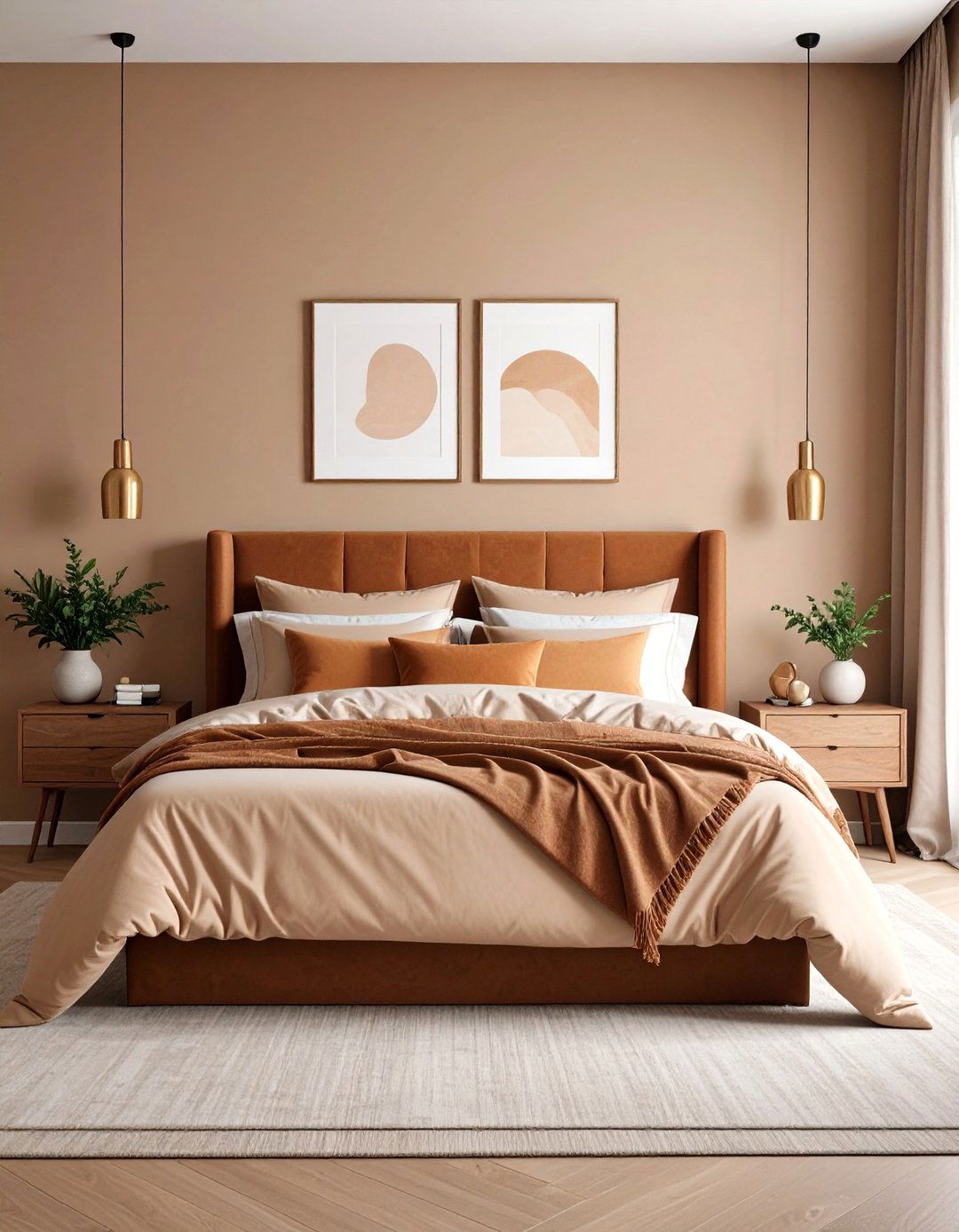
Consider a single wall in a deeper café au lait tone behind the headboard; it instantly adds architectural interest and makes lighter linens pop. Deep beige retains the serenity of neutrals yet provides enough pigment to ground the room, especially in open-plan layouts. Pair it with mid-tone wood nightstands so the contrast feels intentional rather than stark. Try satin instead of flat paint—the slight sheen reflects evening lamplight, adding richness that changes through the day. Keep artwork minimal so the wall color remains the star feature, giving the bedroom gallery-like sophistication.
3. Install Layered Lighting for Customizable Ambience
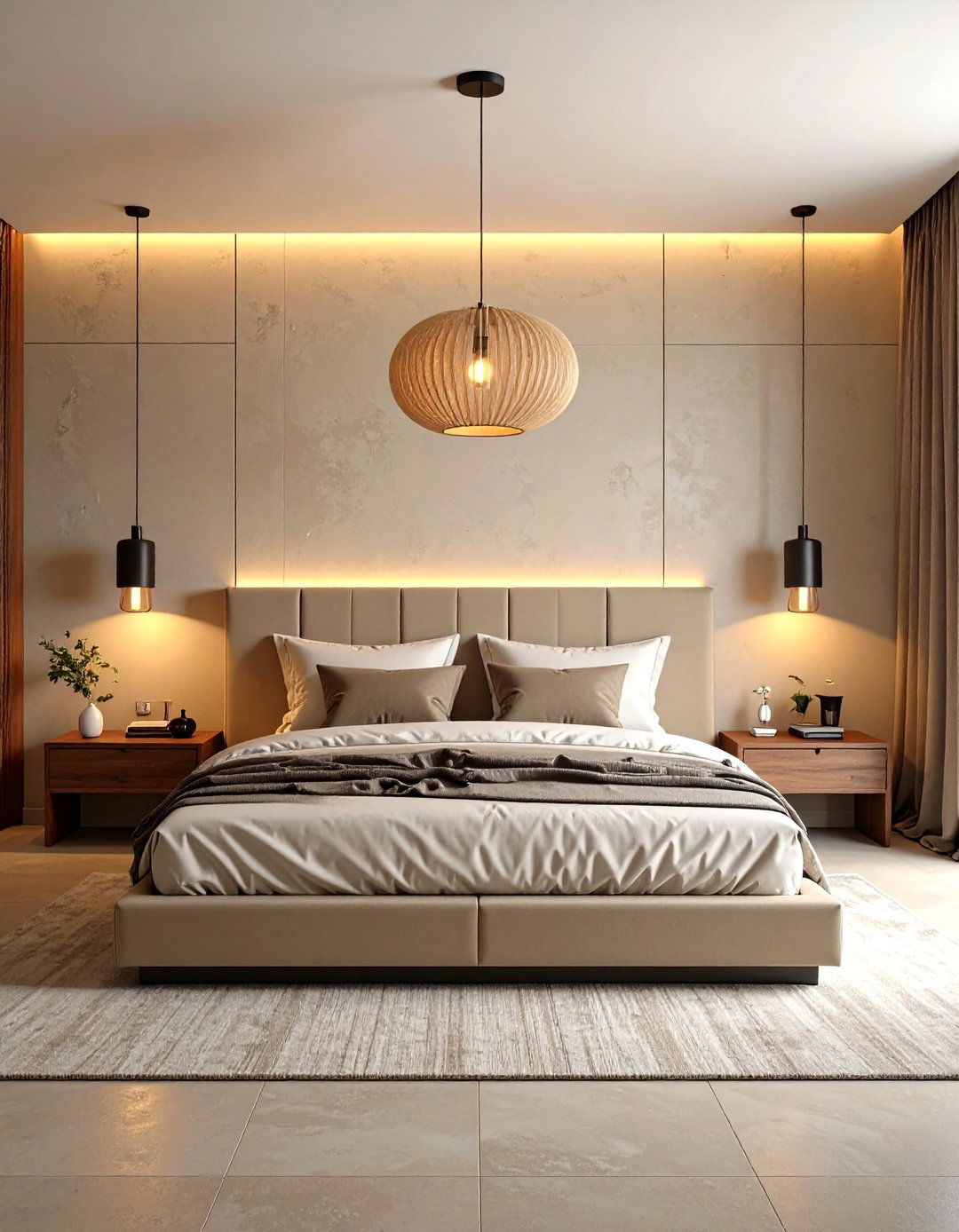
Swap a single ceiling fixture for a trio of light sources: soft bedside sconces, a sculptural pendant, and hidden LED strip lighting behind the headboard. Each layer serves a task—reading, general glow, or nighttime calm—and together they sculpt the beige palette, revealing textures after sunset. Choose warm-white bulbs (2700-3000 K) to avoid casting a harsh gray tint on the walls. A dimmer switch lets you glide from energizing morning brightness to spa-like evening hush with one slide, proving that mood control is as important as color choice in a neutral scheme.
4. Mix Beige and Crisp White for Airy Balance
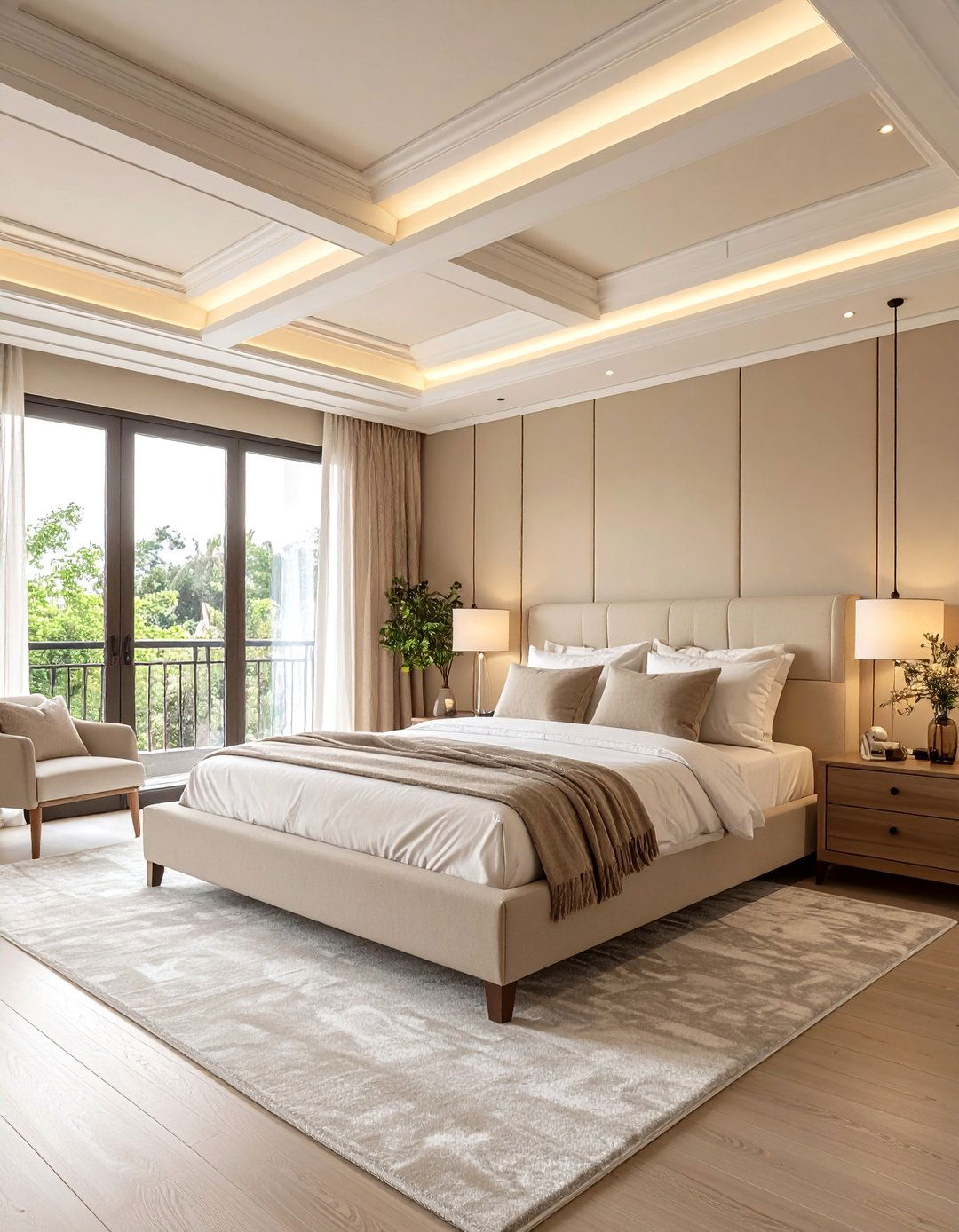
White trim, bedding, or ceiling panels lighten beige’s visual weight, creating an airy, almost coastal vibe without abandoning warmth. Designers recommend off-white with a touch of cream so the transition feels seamless. Add glass lamps or clear acrylic accents to maintain the floating effect, and keep furniture legs exposed to allow floors to breathe. This high-contrast neutrality works especially well in smaller bedrooms, where pure beige walls might otherwise recede into shadow. The interplay of two gentle neutrals amplifies daylight, making mornings feel brighter even on overcast days.
5. Introduce Warm Metallic Accents for Subtle Glamour
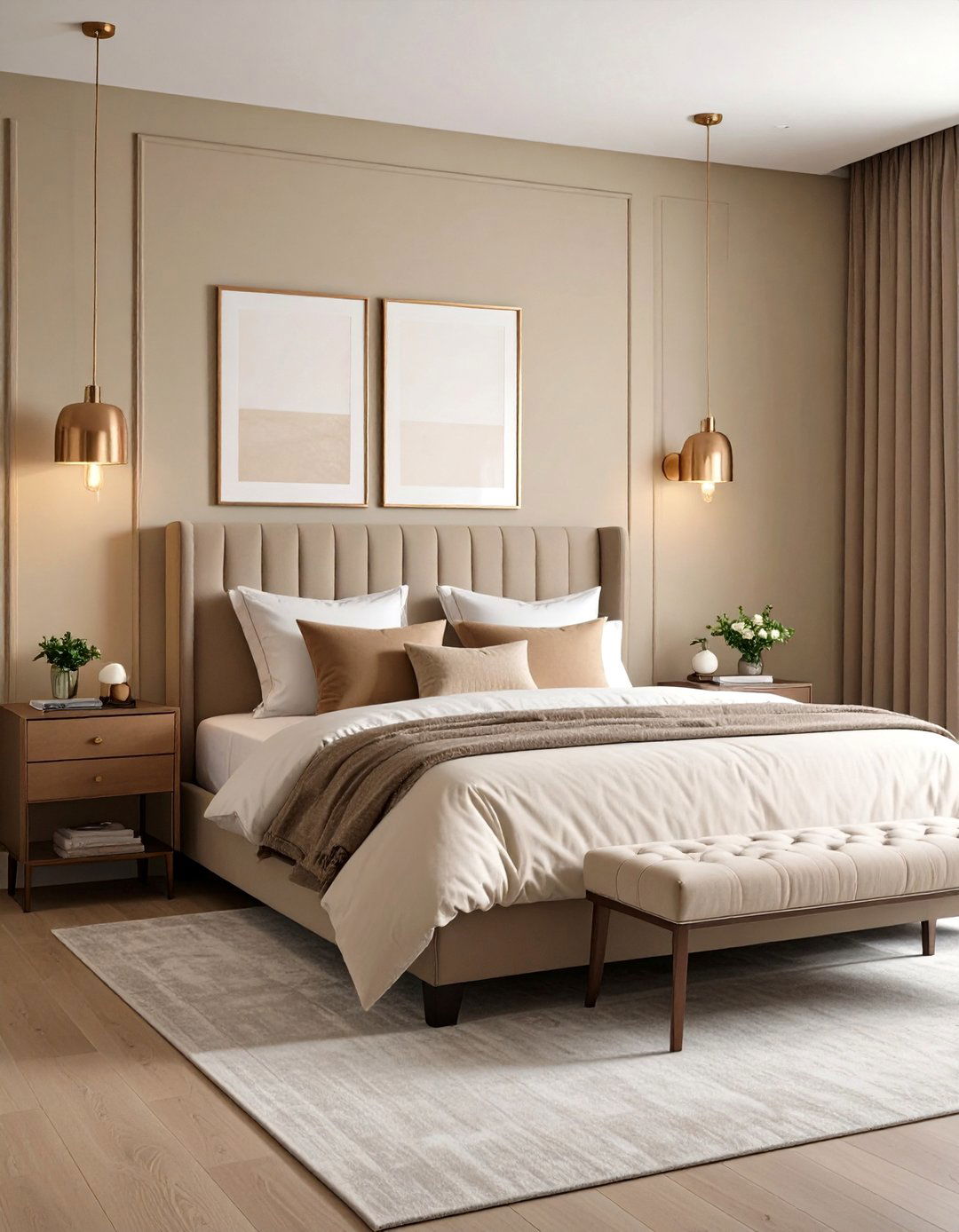
A brushed-brass sconce or copper picture frame can lift an all-beige bedroom from simple to sophisticated. Mixing warm metals with cool chrome in small doses adds visual rhythm without overpowering the calm palette. The key is restraint: aim for three metallic moments spread across the room—lighting, hardware, and a decorative tray, for example. Metallics catch and bounce light, making a moody taupe wall shimmer by night. By keeping the backdrop neutral, you allow every glimmer to stand out like jewelry on a classic outfit.
6. Embrace Scandinavian Minimalism in a Beige Bedroom

Strip the room to essentials: a low platform bed, floating nightstands, and clean-lined wardrobe in pale oak. Scandinavian style relies on negative space as much as furnishings, letting the beige envelope radiate calm. Textiles stay monochrome—think ivory wool throws or oatmeal duvet covers—while black metal lamp arms provide a tiny jolt of contrast. Keep décor purposeful: a single ceramic vase of foraged branches delivers nature indoors. This pared-back approach spotlights craftsmanship and proportion, proving beige can be as modern as any stark white loft.
7. Make a Statement with an Upholstered Headboard
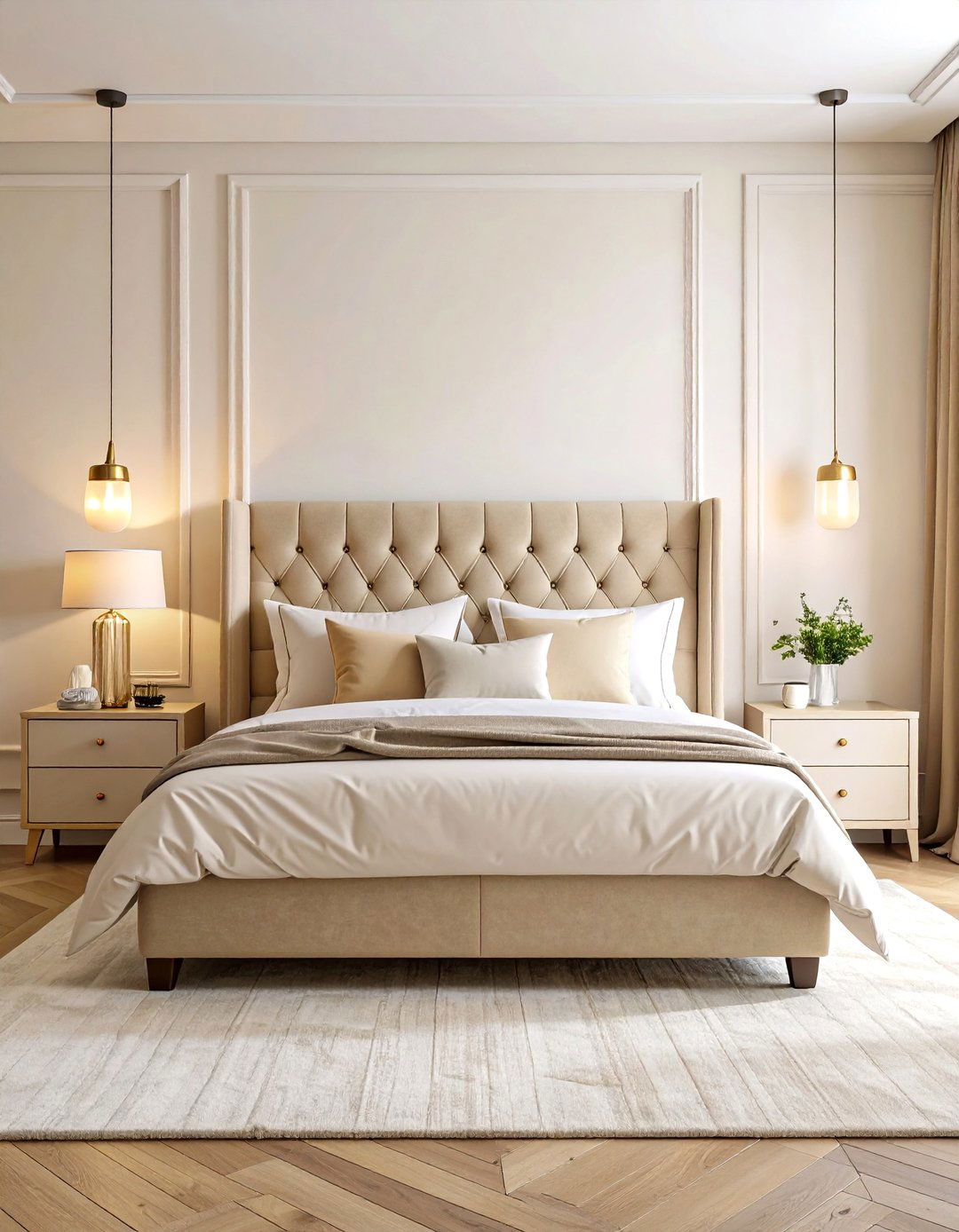
An oversized headboard in tufted linen or channel-stitched velvet instantly becomes the focal point, adding luxury without bright color. Choose a tone one shade darker than the wall so it reads rich yet cohesive. The plush surface absorbs sound, contributing to a hushed, hotel-like atmosphere that supports deeper sleep. Complement with streamlined bedding—too many competing textures dilute the headboard’s impact. If space allows, frame it with slim pendant lights to draw the eye upward and elongate the wall.
8. Layer Terracotta Accents for Earthy Warmth
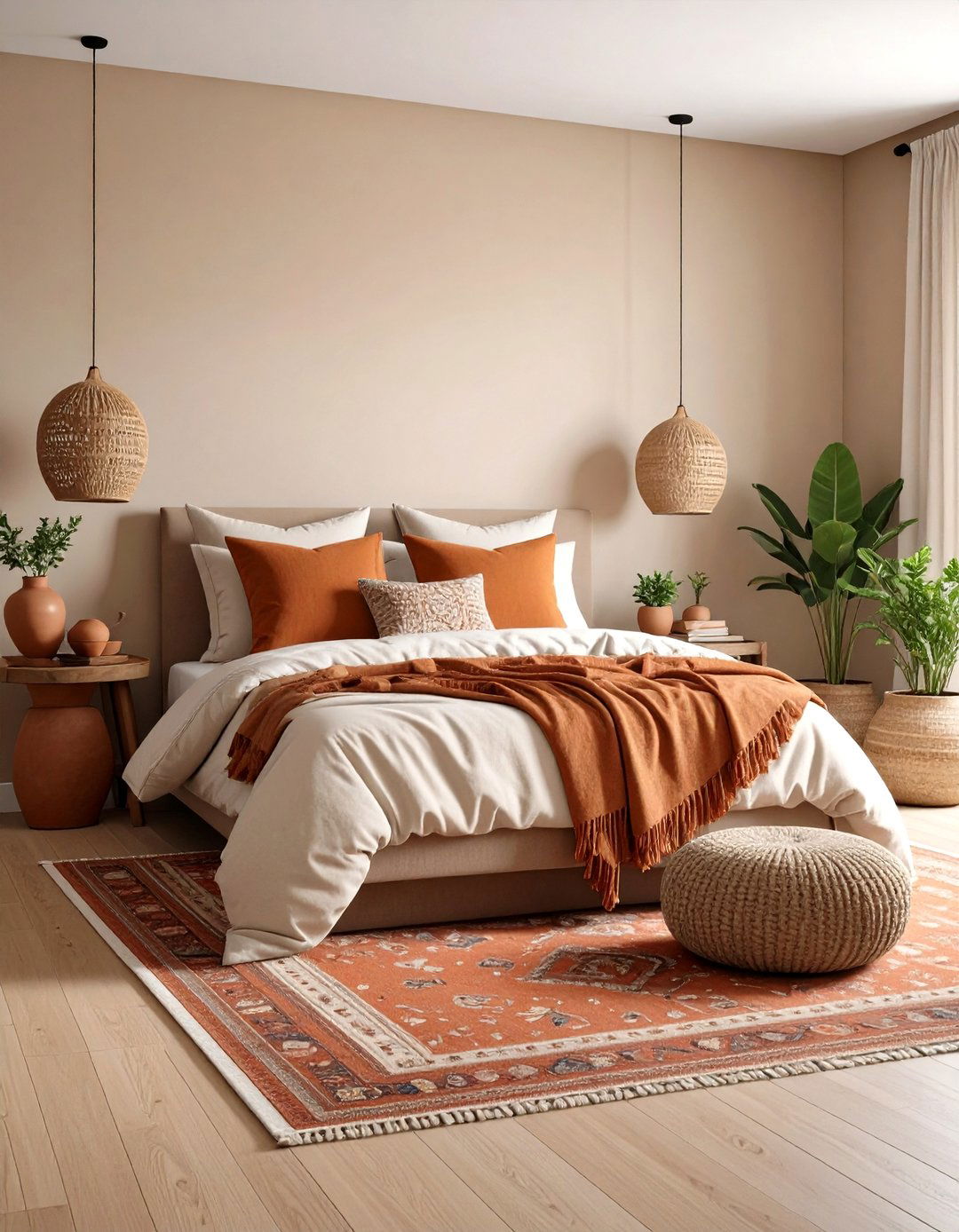
Terracotta pots, clay lamp bases, or rust-toned linen cushions introduce an earthy counterpoint that keeps beige from feeling chilly. The subtle red undertone echoes sun-baked landscapes, perfect for owners who crave warmth but not bright color. Anchor the composition with a kilim rug featuring muted terracotta stripes; its pattern disguises everyday wear while injecting quiet personality. Natural clay surfaces age beautifully, their patina deepening over time and telling a lived-in story against the neutral backdrop.
9. Go Monochrome with Tone-on-Tone Bedding

To craft a cocooning effect, stack pillows, quilts, and throws in multiple shades of beige—sand, oatmeal, taupe—letting subtle variation add dimension. Monochrome bedding eliminates visual noise, ideal for light sleepers who find bright contrast distracting. Keep interest high by mixing weaves: a waffle blanket, sateen sheets, and nubby alpaca throw form a tactile hierarchy. Designers note that a unified palette visually enlarges the bed, turning it into a serene centerpiece that invites lingering on slow mornings.
10. Channel Coastal Calm with Driftwood and Linen
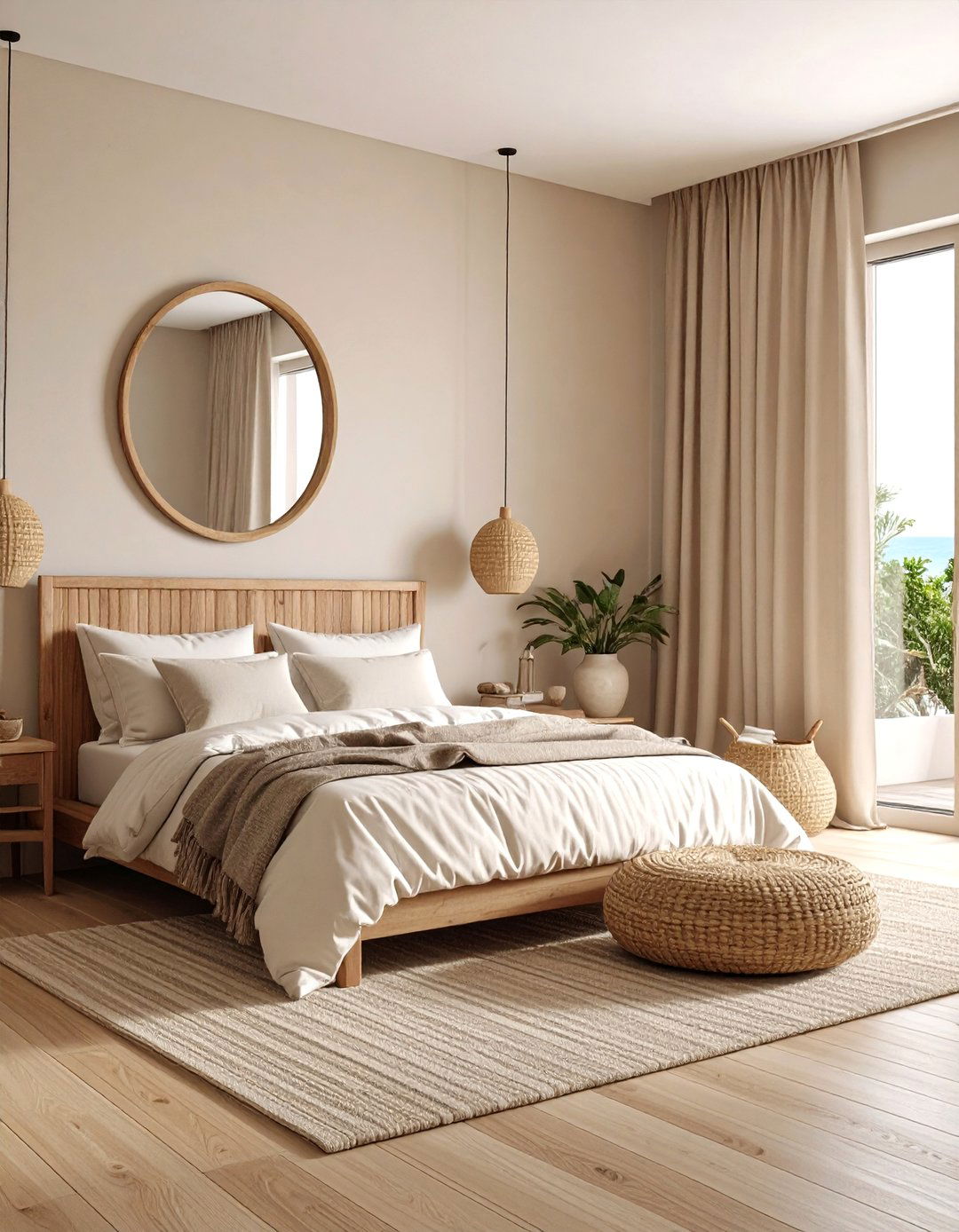
A driftwood mirror, linen curtains, and weathered oak flooring evoke shoreline serenity without clichéd blue accents. Beige walls mimic sandy stretches, while the wood’s gray undertones amplify the restful vibe. Finish with a woven seagrass basket to corral throws—functional storage doubling as texture. Softly striped bedding in cream and taupe echoes tide lines, subtly grounding the theme. The result feels like a sea breeze captured in a room, minus overt nautical motifs.
11. Add Black Accents for Modern Edge
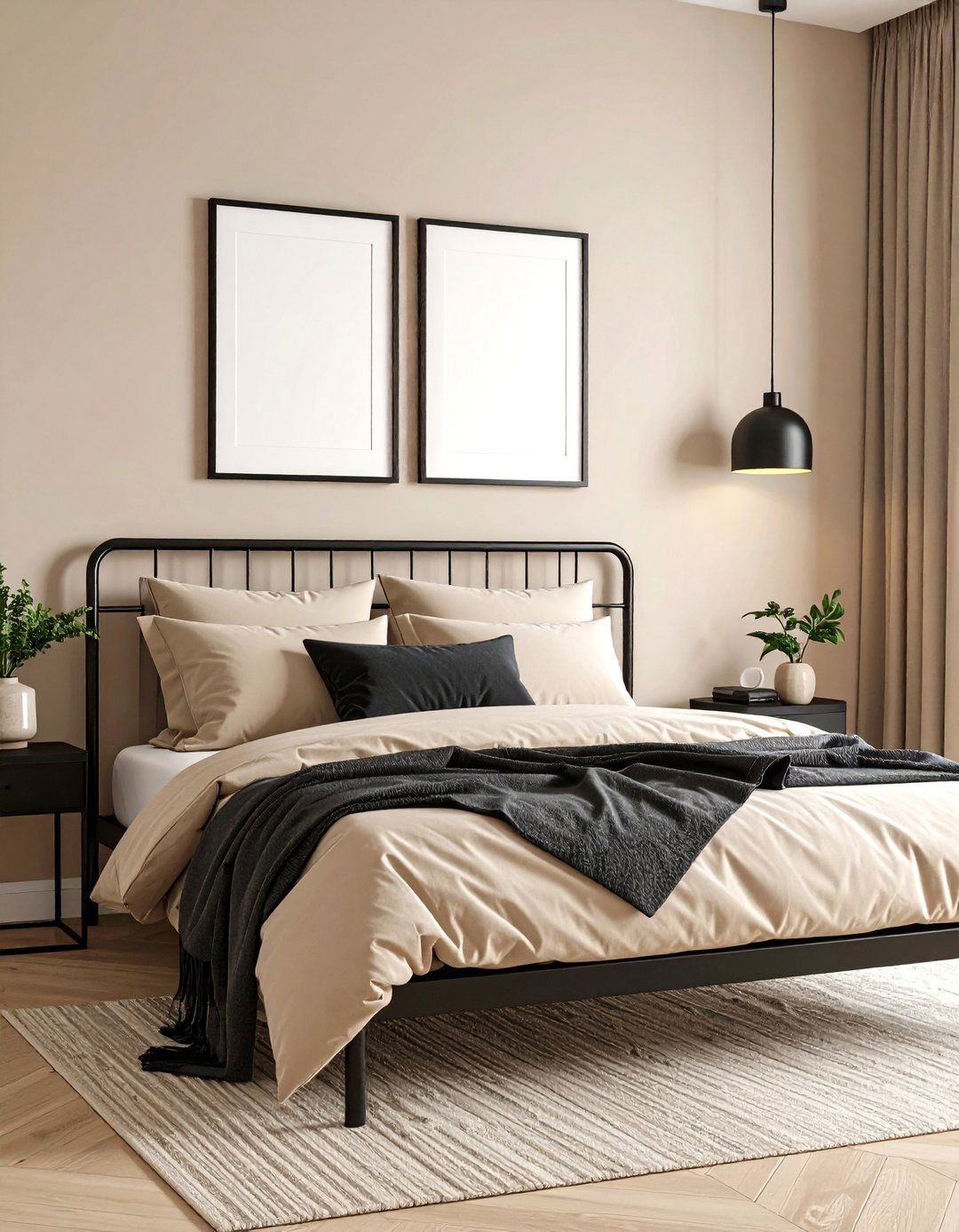
Slim black picture frames, a matt-black reading lamp, or charcoal throw break up beige’s sweetness and introduce contemporary tension. Even a thin metal bedframe can redefine the mood, making neutrals appear sharper and more intentional. Balance is crucial: cap dark elements at roughly ten percent of the visual field so the space stays calming. This trick works well for renters who can’t paint—simply swap out hardware or add a charcoal lumbar pillow to achieve instant sophistication.
12. Layer Rugs to Soften Floors and Zone Space
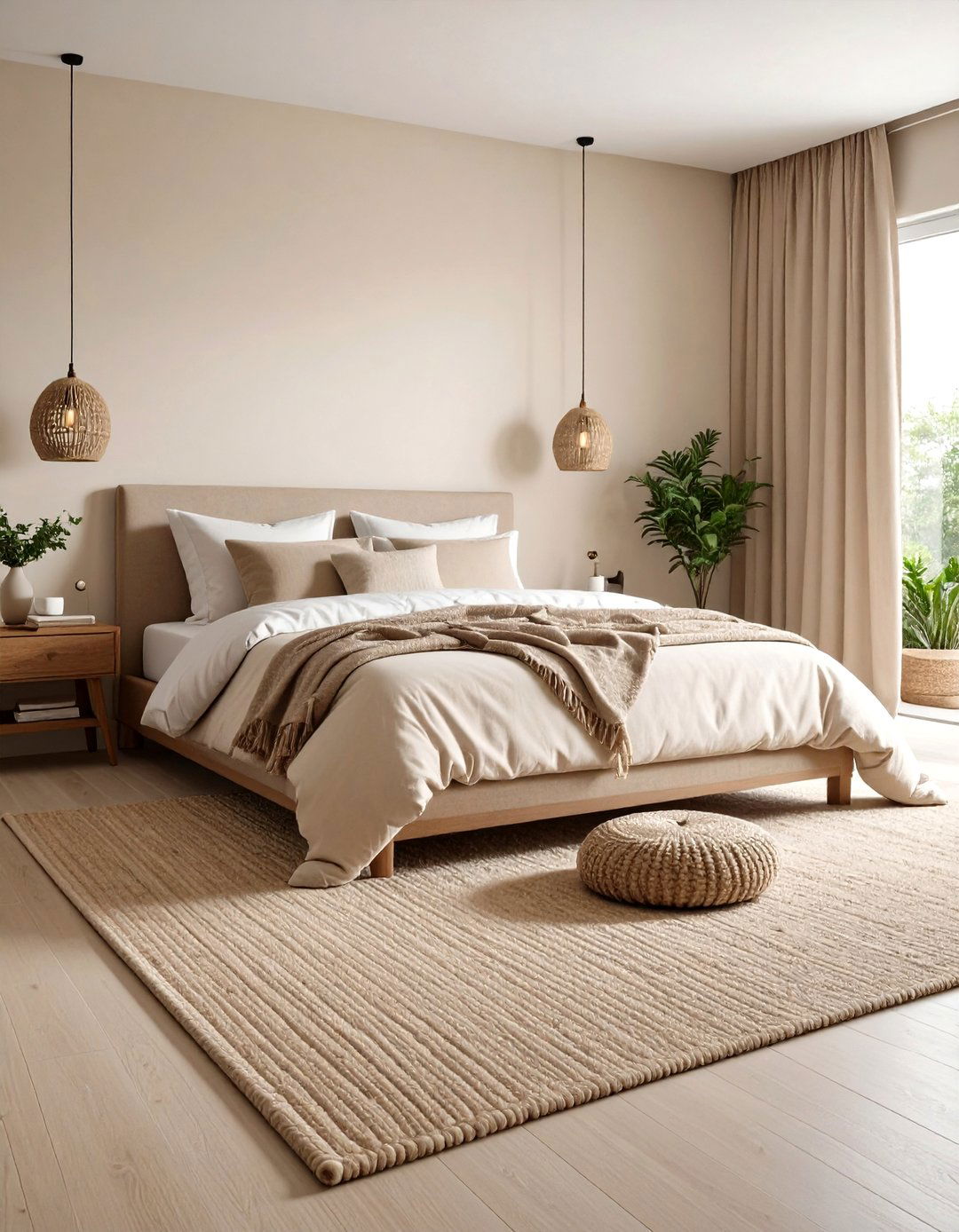
Place a plush wool area rug over a larger jute base to create visual hierarchy and under-foot comfort. In beige rooms, layered rugs add depth that walls alone can’t supply. Choose varying pile heights so the top rug doesn’t slip. If your flooring is dark wood, a light sand-colored lower rug bridges the tone gap, ensuring coherence. The layered look also defines the sleep zone in studio apartments, preventing the bed from “floating” awkwardly in open layouts.
13. Infuse Japandi Serenity into a Beige Bedroom
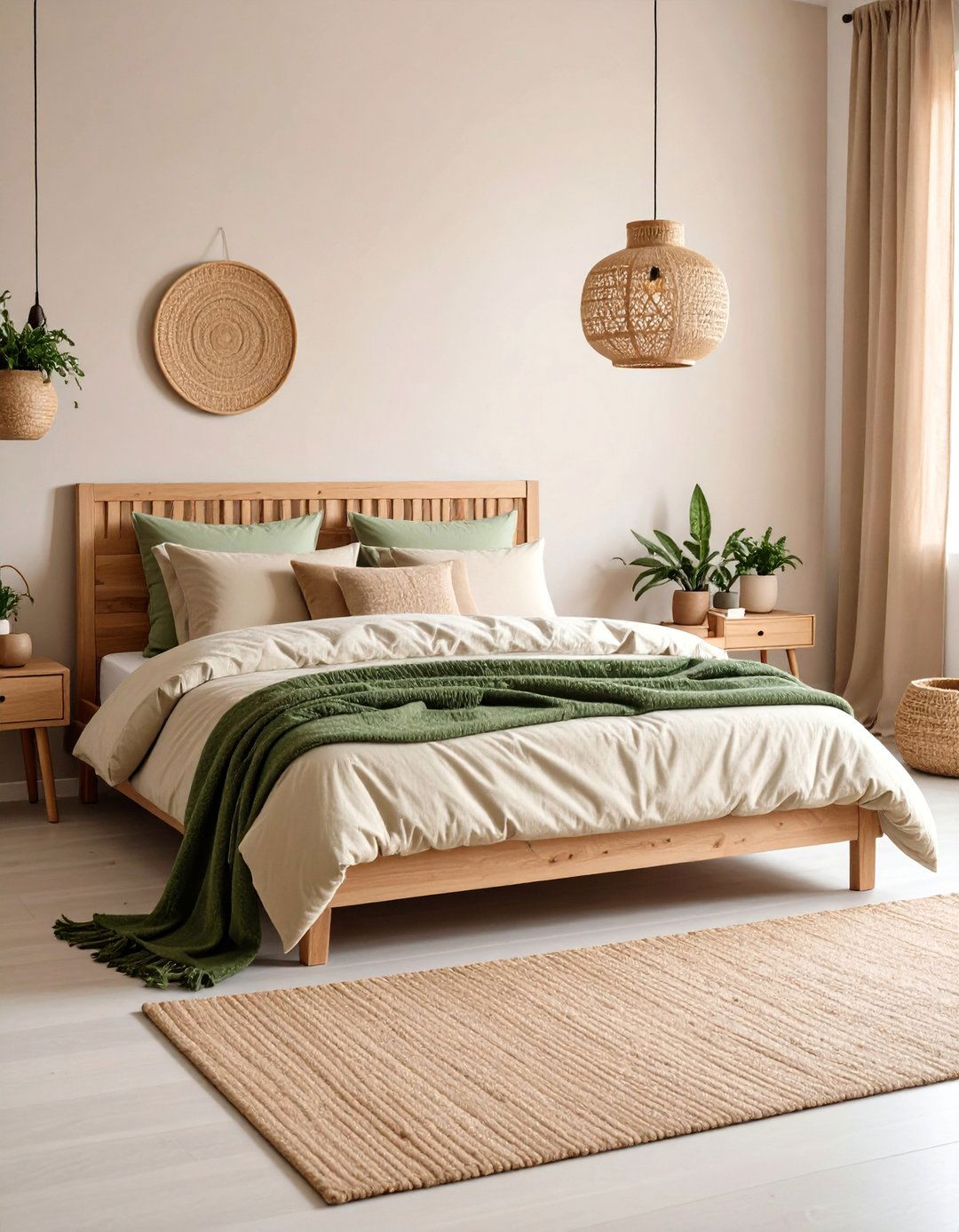
Japandi—where Japanese wabi-sabi meets Scandinavian simplicity—relies on muted neutrals, low furniture, and organic shapes. A platform bed in pale oak, paired with stoneware pottery and paper lantern pendants, underscores beige’s calming influence. Keep décor sparse; the style prizes purposeful negative space. Add a single mossy-green throw to echo nature, but otherwise let beige shine. According to color-palette guides, these tones foster mindfulness and slow living—ideal for winding down after hectic days.
14. Bring in Botanical Prints for Subtle Pattern

Delicate fern or pampas-grass prints introduce pattern without dominating the palette. Choose sepia-toned artwork to stay within the beige family, and frame in thin wood to echo natural inspiration. Soft botanical motifs refresh the space visually and psychologically; studies link nature imagery to reduced stress and improved sleep quality. Hang two medium-size pieces above the dresser instead of one large canvas to create balanced symmetry and draw the eye around the room.
15. Add Mirrored Furniture for Glam Beige Sparkle

A mirrored nightstand or wardrobe reflects both light and color, multiplying the room’s brightness while keeping hues neutral. Pair with crystal drawer pulls for additional shimmer, and lay a velvet throw at the bed’s foot to contrast hard glam surfaces with plush comfort. Because beige walls act as a soft filter, reflections stay muted and elegant rather than harsh. Limit mirrored pieces to one or two items to avoid visual overload and maintain a restful ambiance.
16. Embrace Rustic Reclaimed Wood for Character
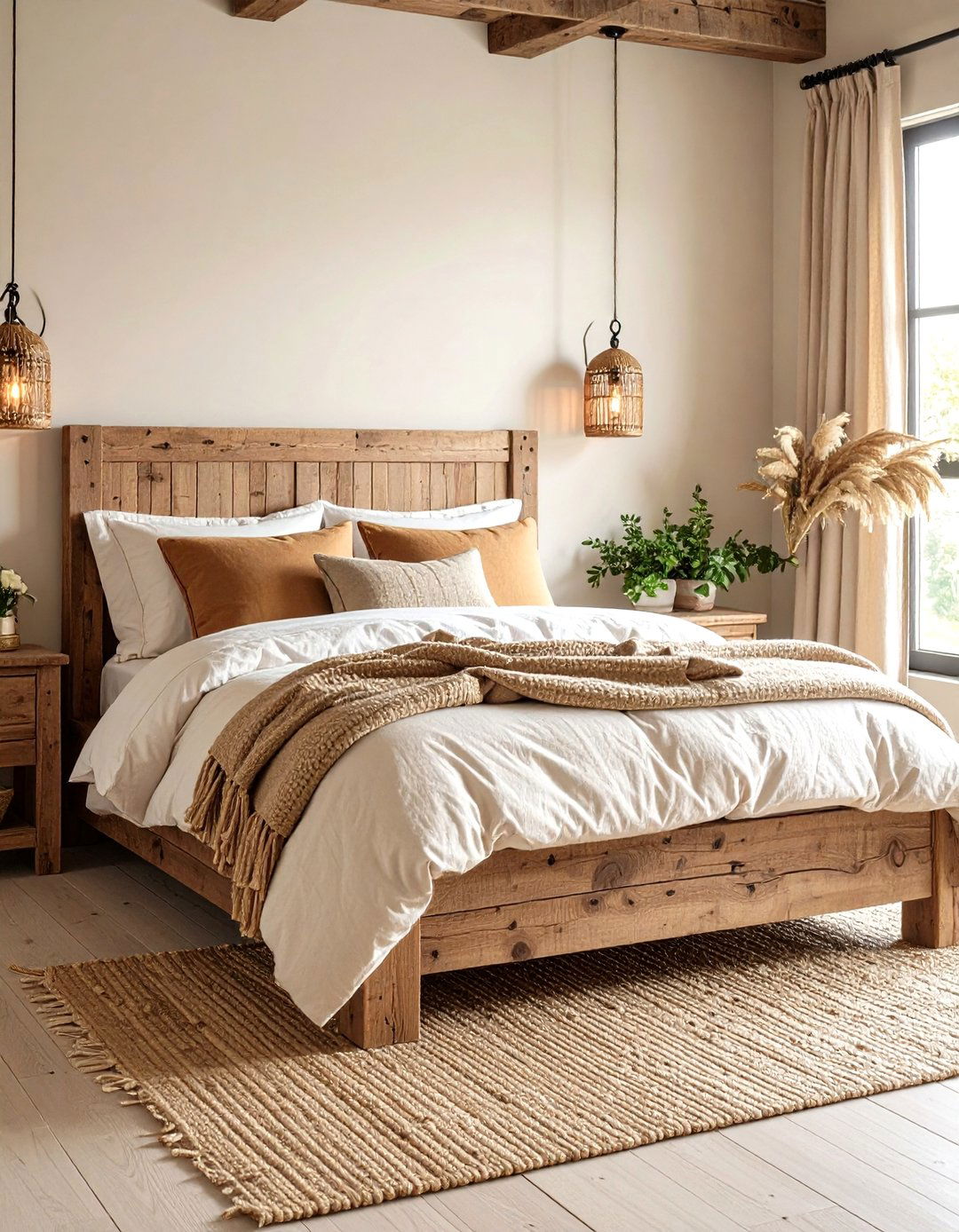
A timber-frame bed made from salvaged barn boards brings instant history, its knots and nail marks standing out against smooth beige walls. Complement with wrought-iron sconces and homespun cotton bedding for farmhouse charm. The contrast between rough timber and refined wall color creates depth without introducing additional hues. Reclaimed wood is eco-friendly, repurposing materials that might otherwise be discarded while adding one-of-a-kind patina.
17. Layer Velvet Textiles for Luxe Comfort

Velvet in biscuit or champagne shades catches light differently throughout the day, adding understated opulence. Start with a single bolster pillow if you’re cautious, or go bold with floor-length velvet curtains that frame windows like theater drapes. Modern velvets offer performance finishes that resist staining—practical as well as plush. The fabric’s low sheen enlivens monochrome bedding and works beautifully under dimmed bedside lamps.
18. Use Navy Pops for Transitional Style
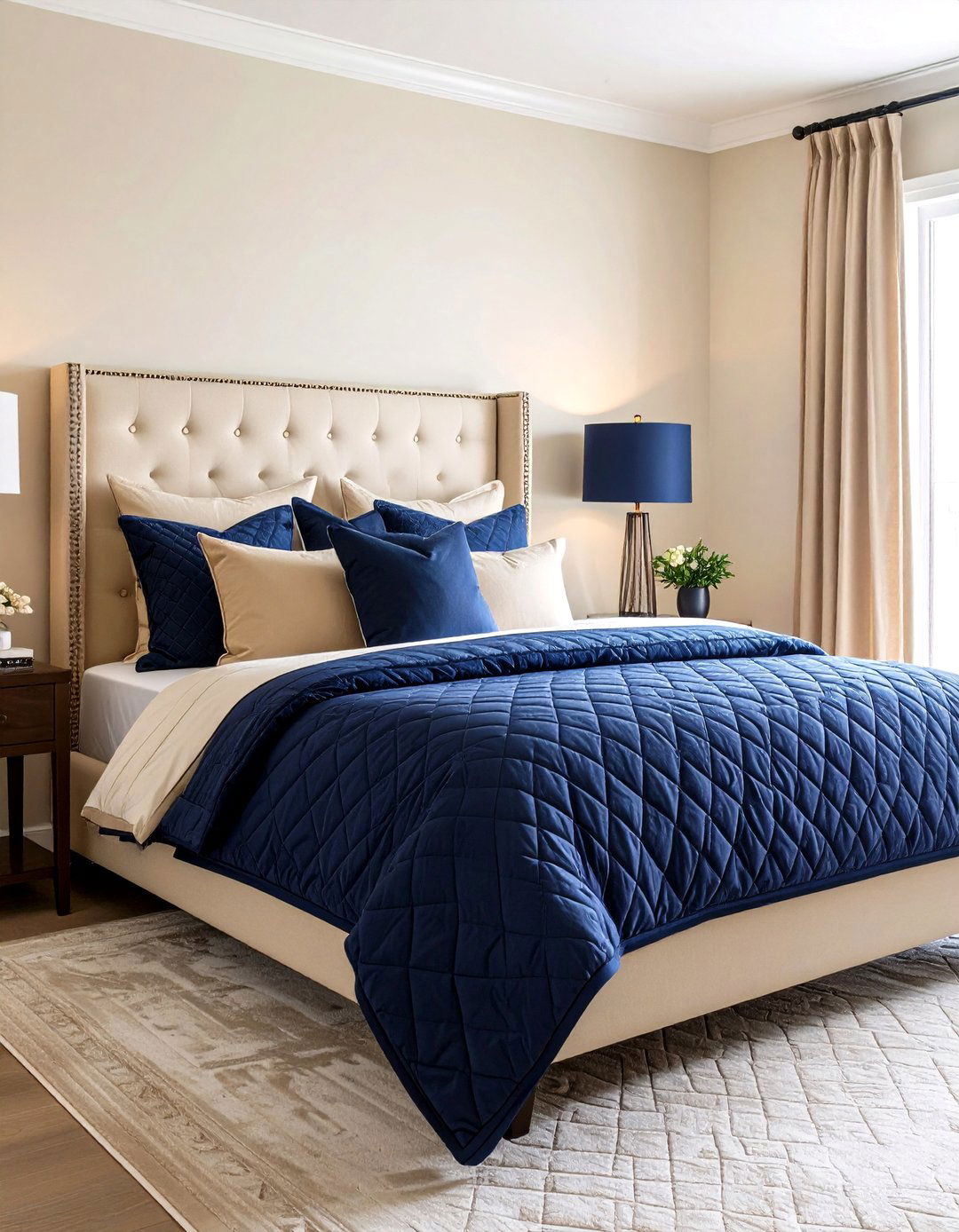
Designers predict softer navy paired with beige will dominate coastal-inspired palettes this year. A single quilted throw or midnight-blue ceramic lamp adds depth while respecting the room’s neutral soul. Navy’s cool undertone counterbalances beige’s warmth, creating a balanced, gender-neutral space. Stick to one or two accents so the eye has a clear focal point, and echo the hue in subtle details—perhaps thin piping on a cushion—to weave the palette together.
19. Optimize Small Beige Bedrooms with Space-Saving Layouts
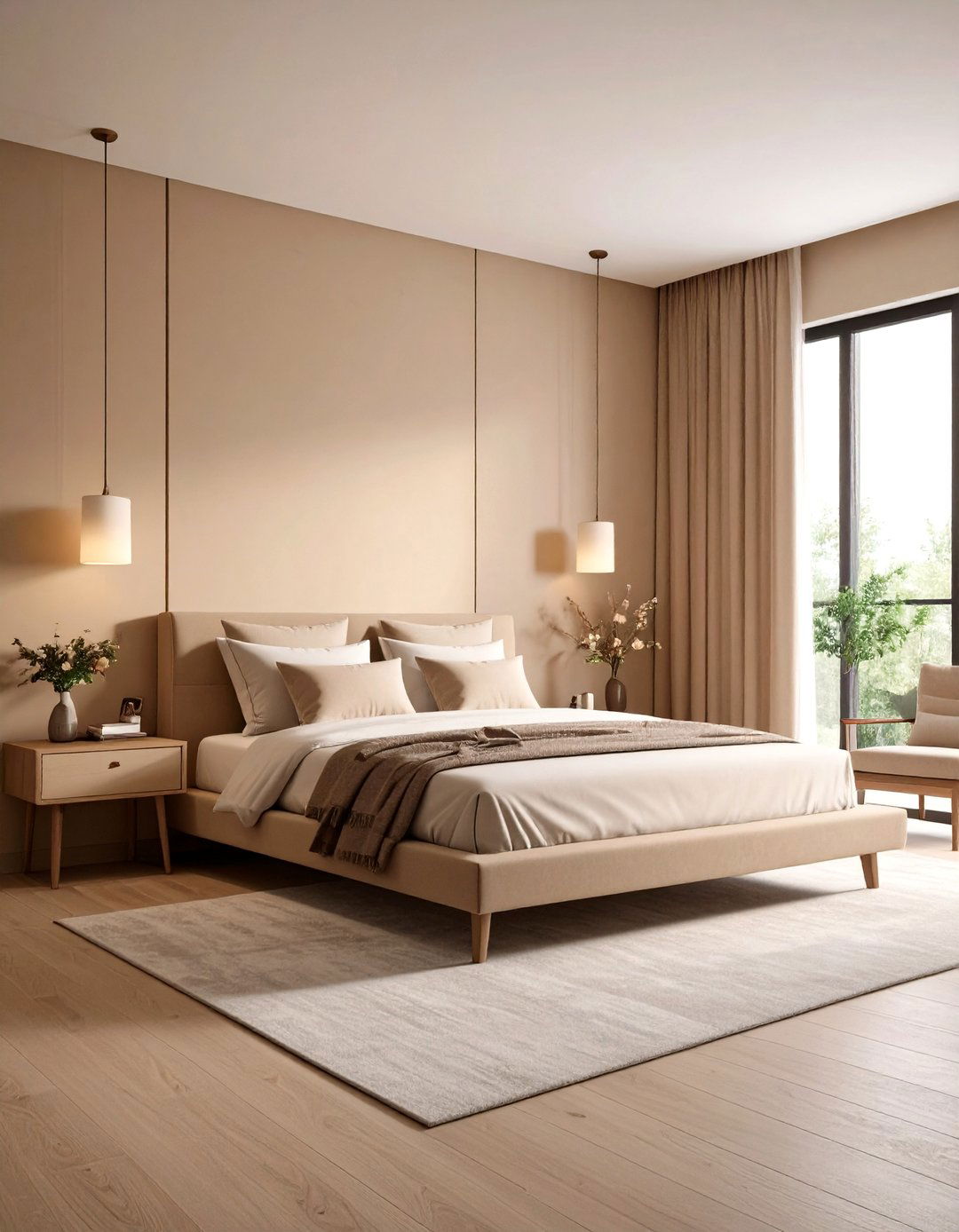
Small rooms benefit from a bed pushed into a corner or lifted on storage drawers, freeing floor area for circulation. Wall-mounted sconces replace bulky bedside lamps, and floating shelves act as both nightstand and display. Experts note that hidden storage maintains tranquility by reducing visible clutter—crucial in a neutral space where every object stands out. Mirrors opposite windows amplify light, preventing beige walls from appearing dingy in tight quarters.
20. Choose Sustainable Materials for an Eco-Chic Beige Bedroom
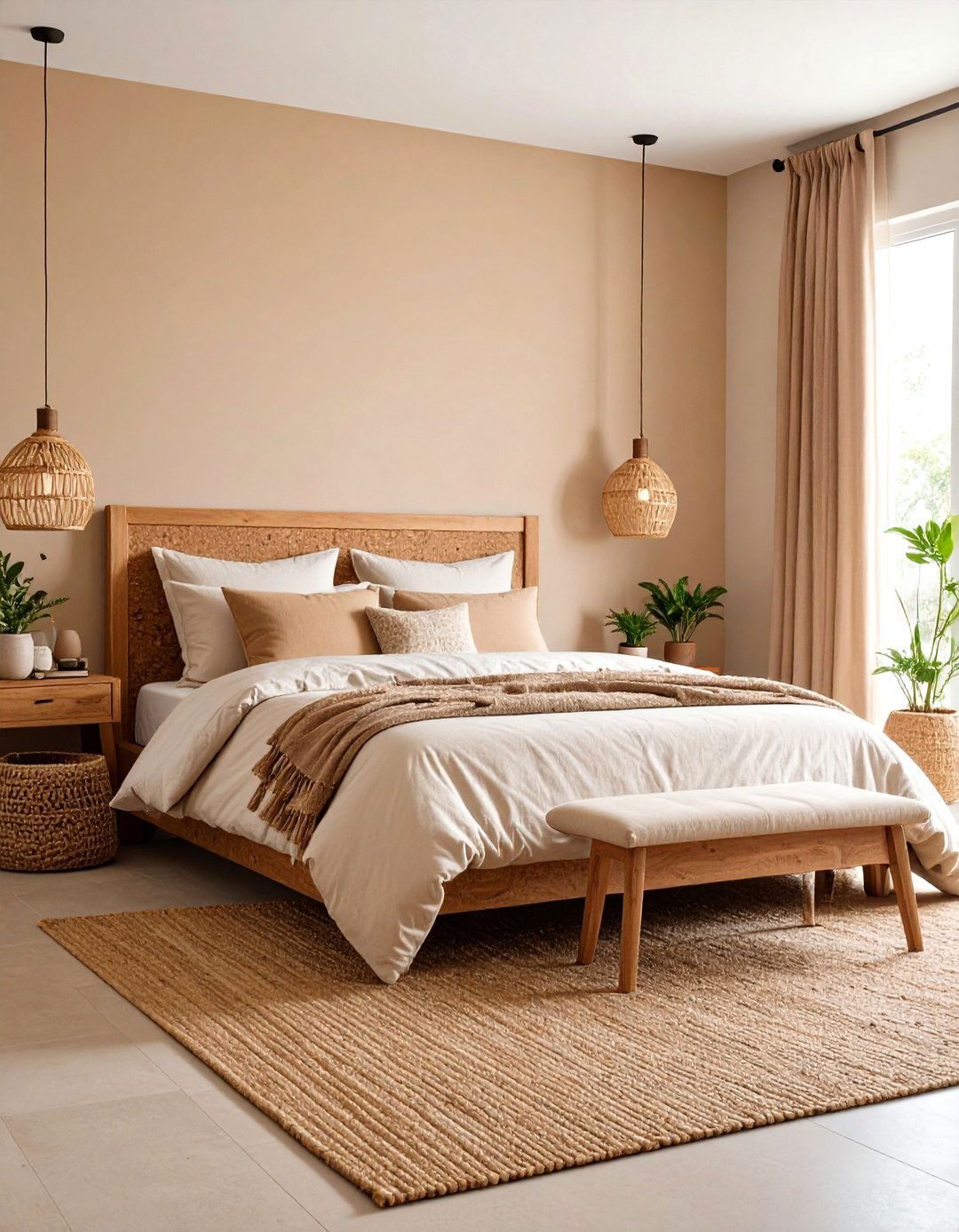
Cork wall panels in natural beige tones insulate against noise and regulate temperature, enhancing sleep quality while supporting renewable forestry. Pair them with organic-cotton or bamboo-blend sheets in sand hues for a fully toxin-free retreat. Eco-certified linens breathe better and wash well, lasting longer than synthetic blends. Add a jute rug and upcycled bedside stool to complete the low-impact ensemble, proving sustainability can look effortlessly elegant.
Conclusion:
From tactile layers and sculptural lighting to eco-friendly finishes, beige bedrooms thrive on nuance rather than neon. Texture, contrast, and thoughtful accents keep the palette dynamic while preserving the calm that neutrals promise. Whether you crave rustic timber, Japandi mindfulness, or a hint of metallic glam, beige provides a flexible canvas that lets your personality—and your best night’s sleep—shine through.


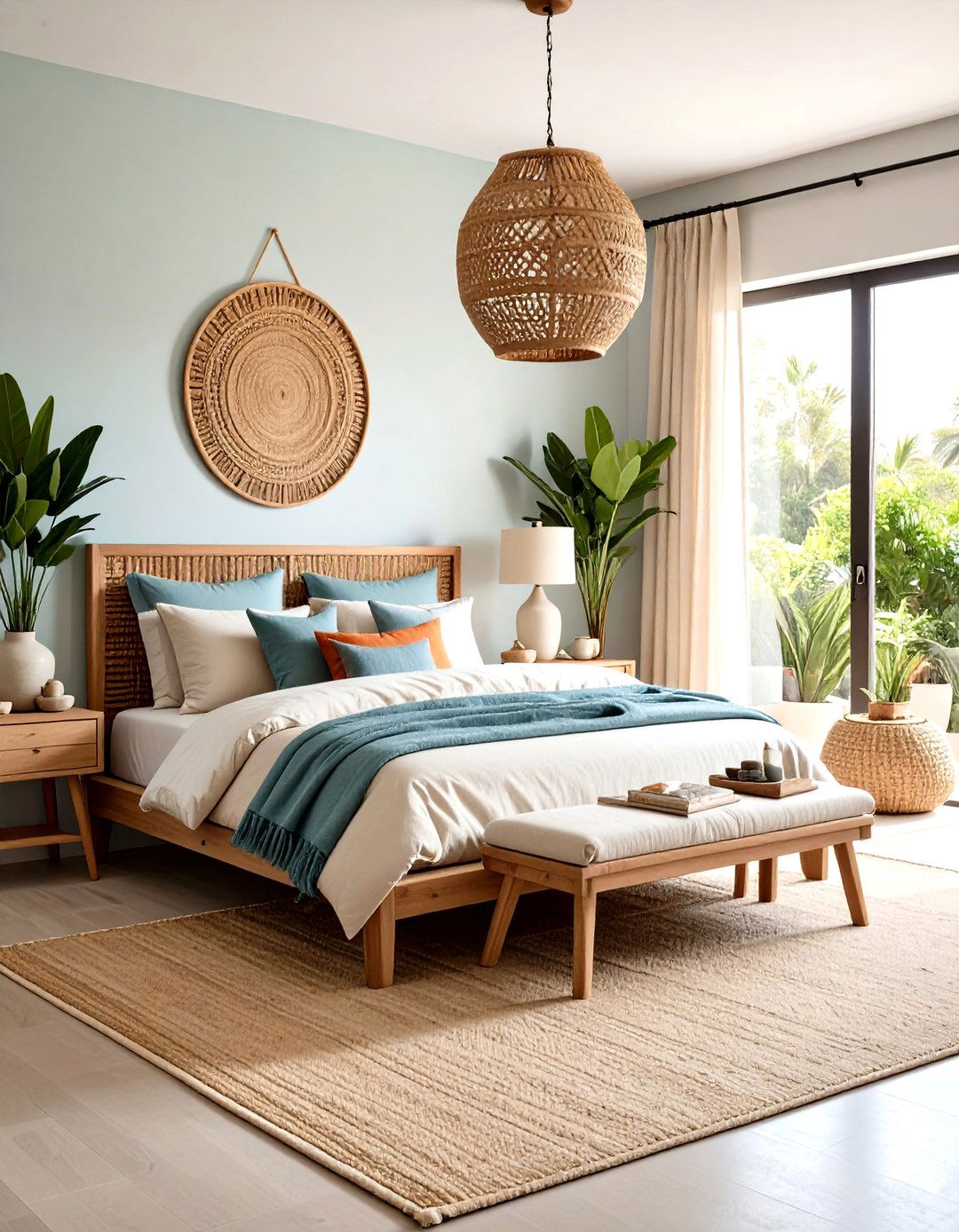

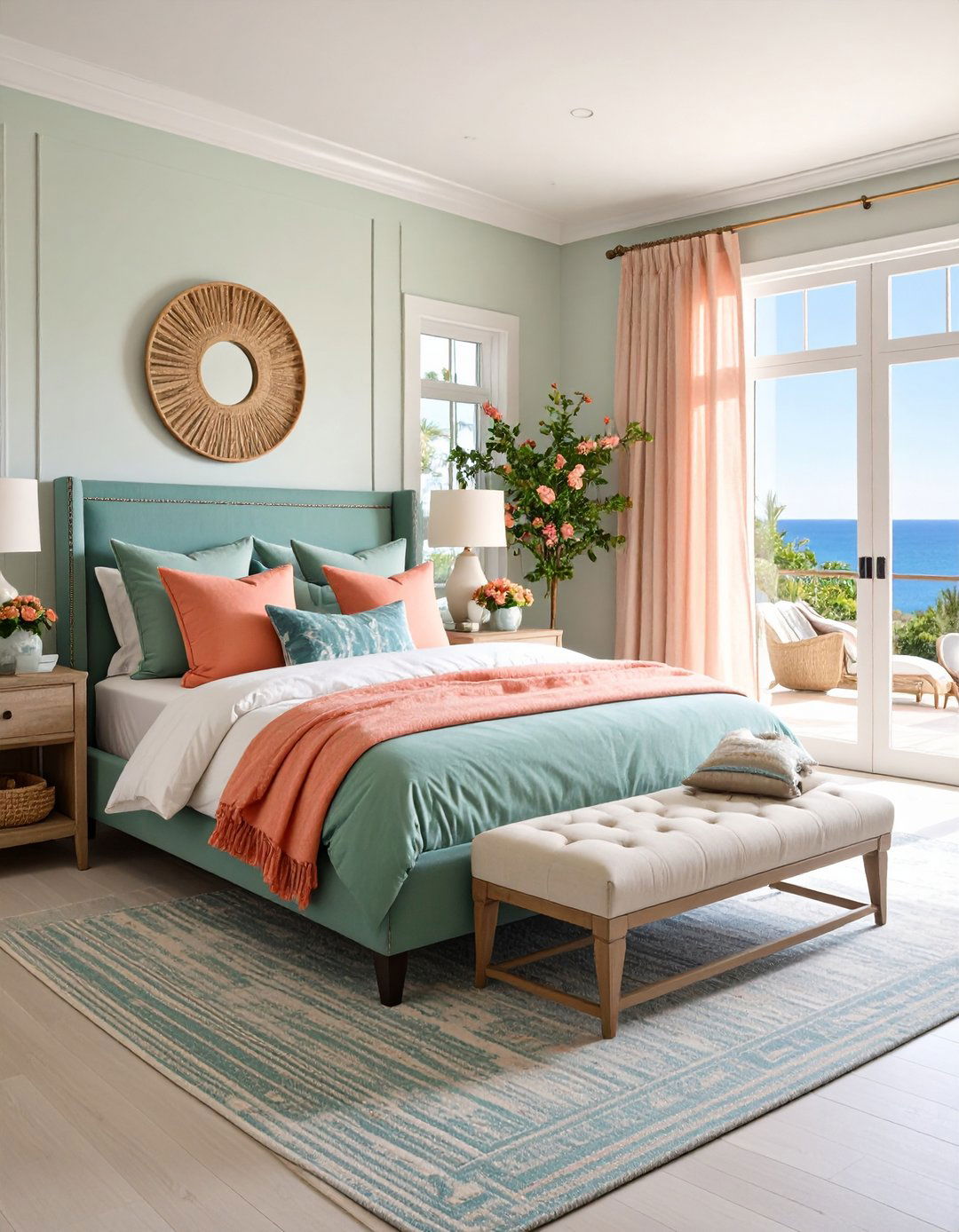
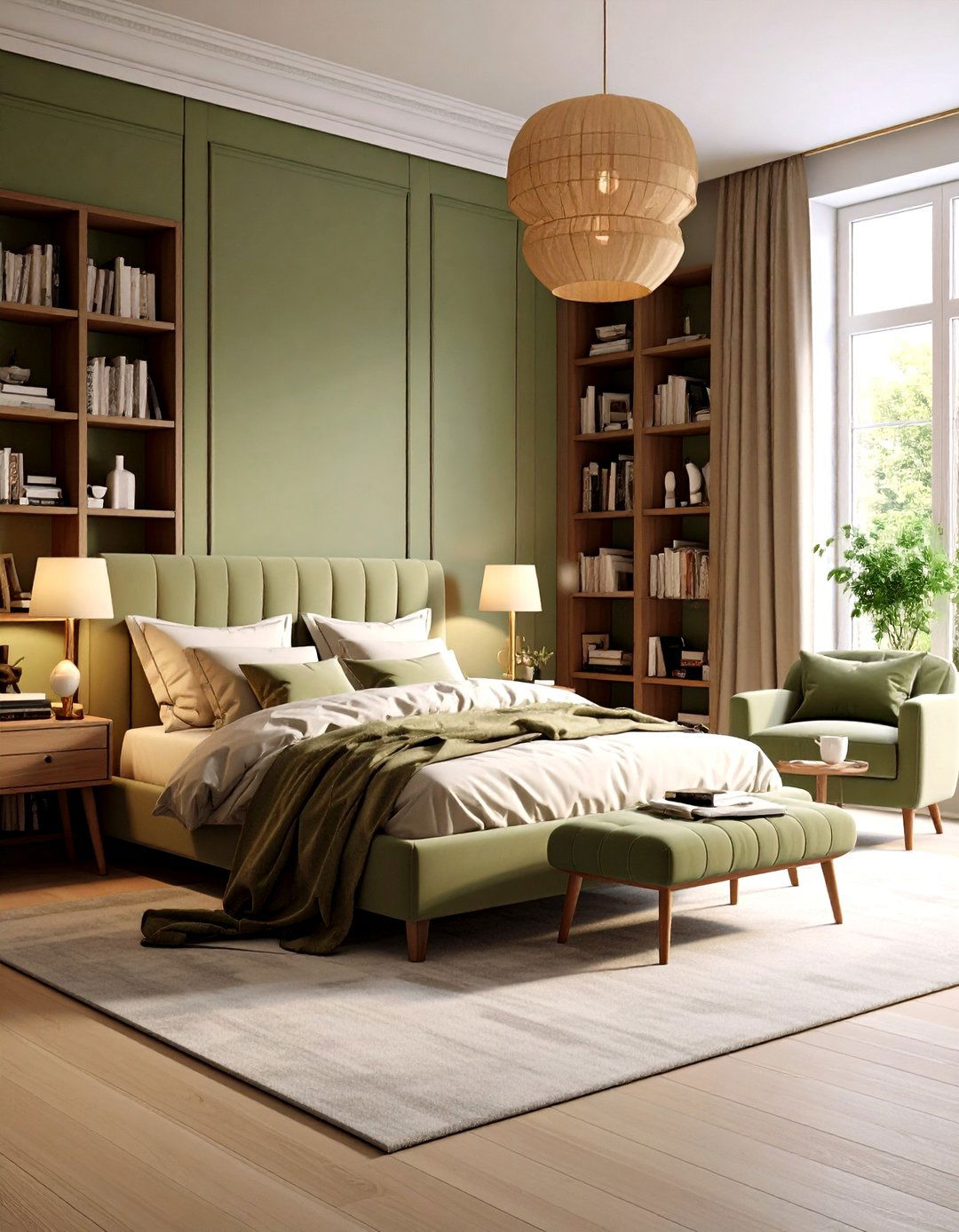

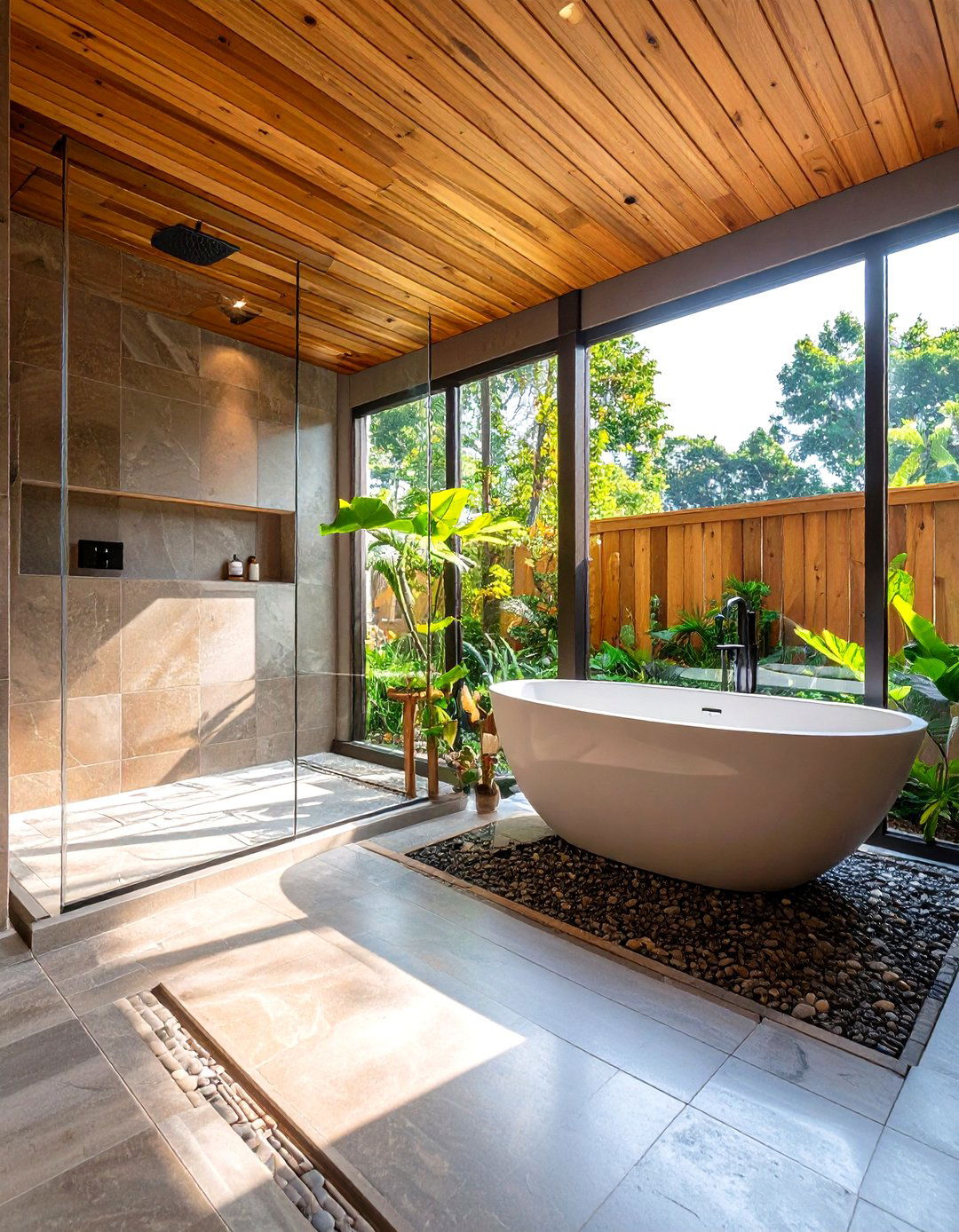

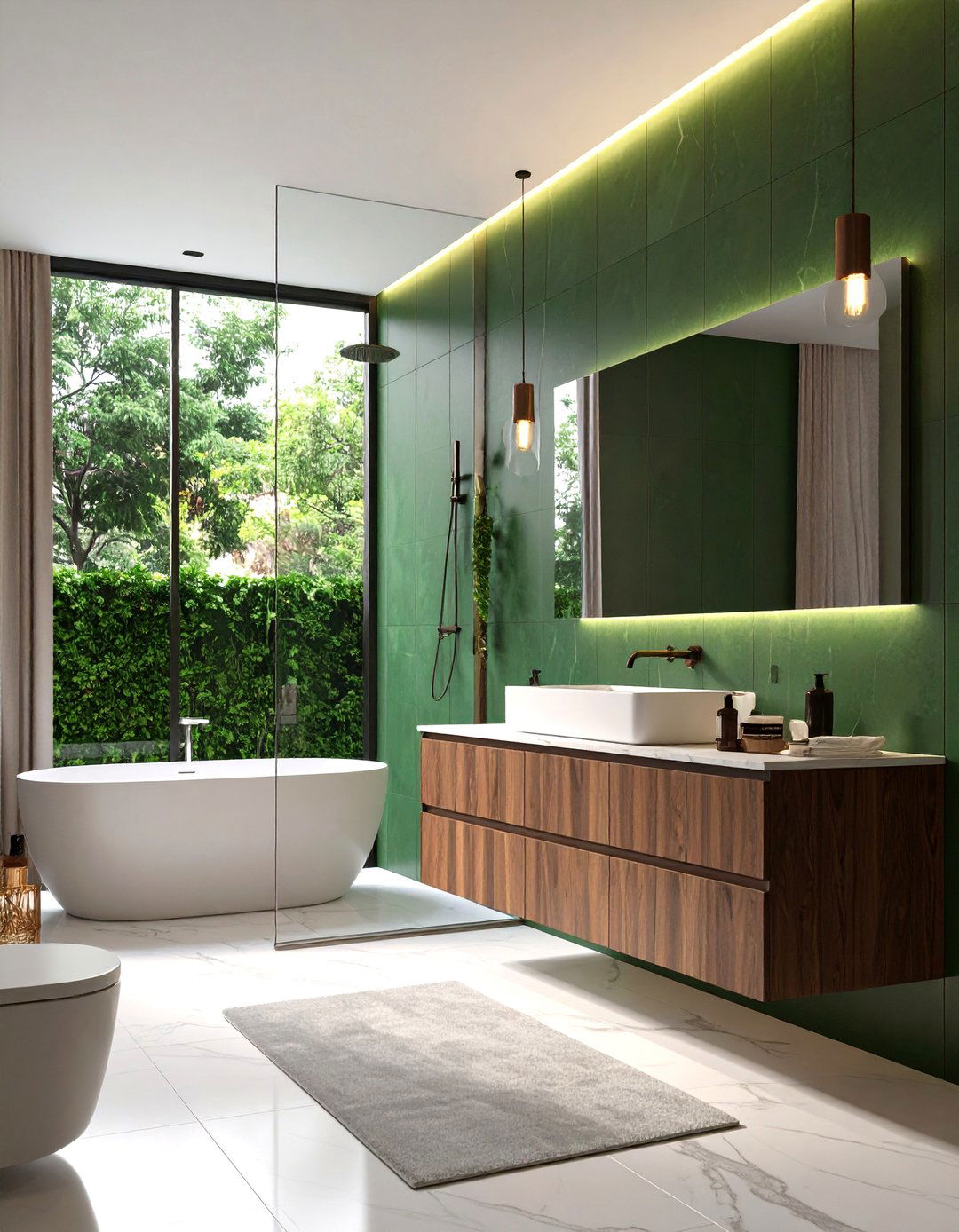
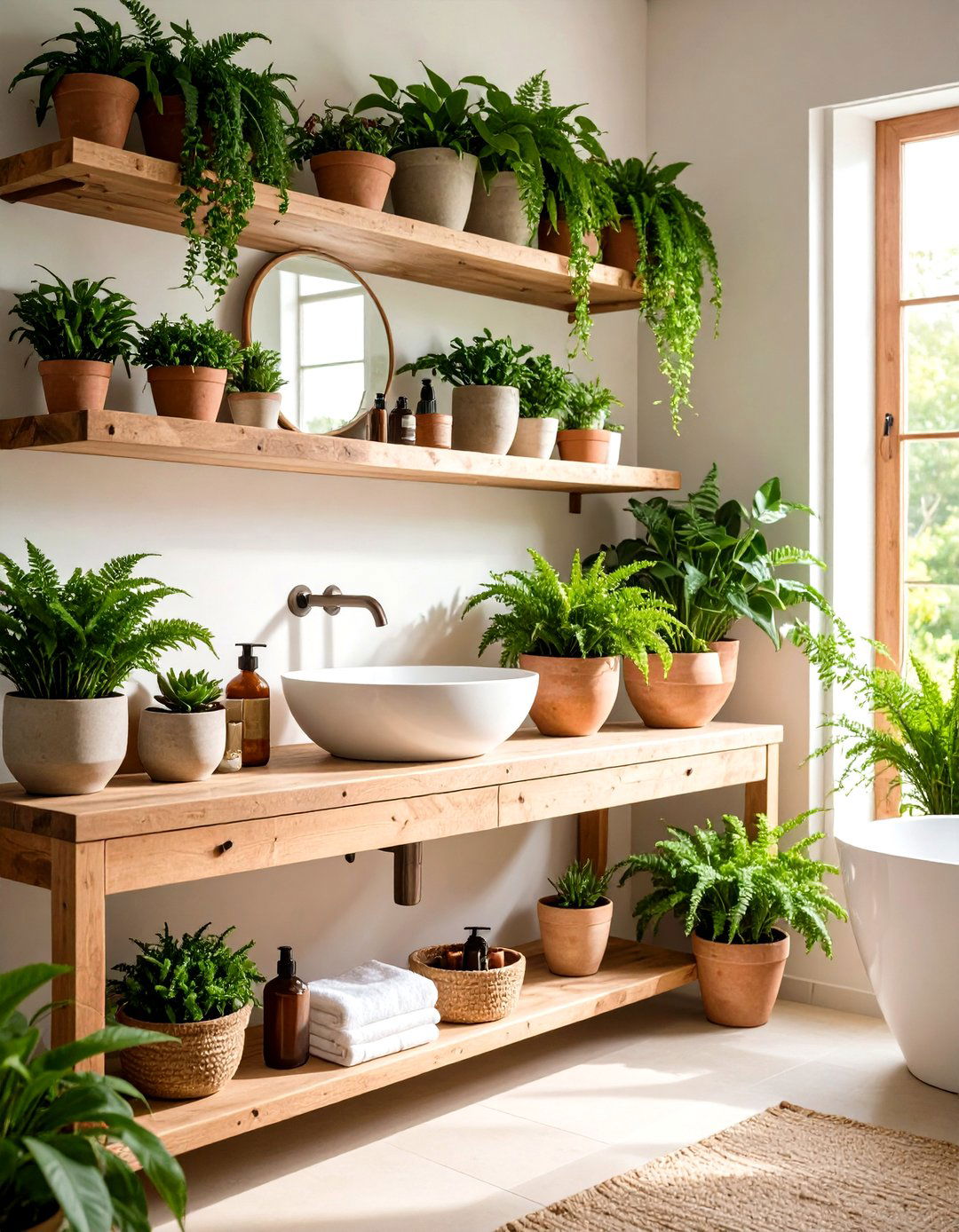

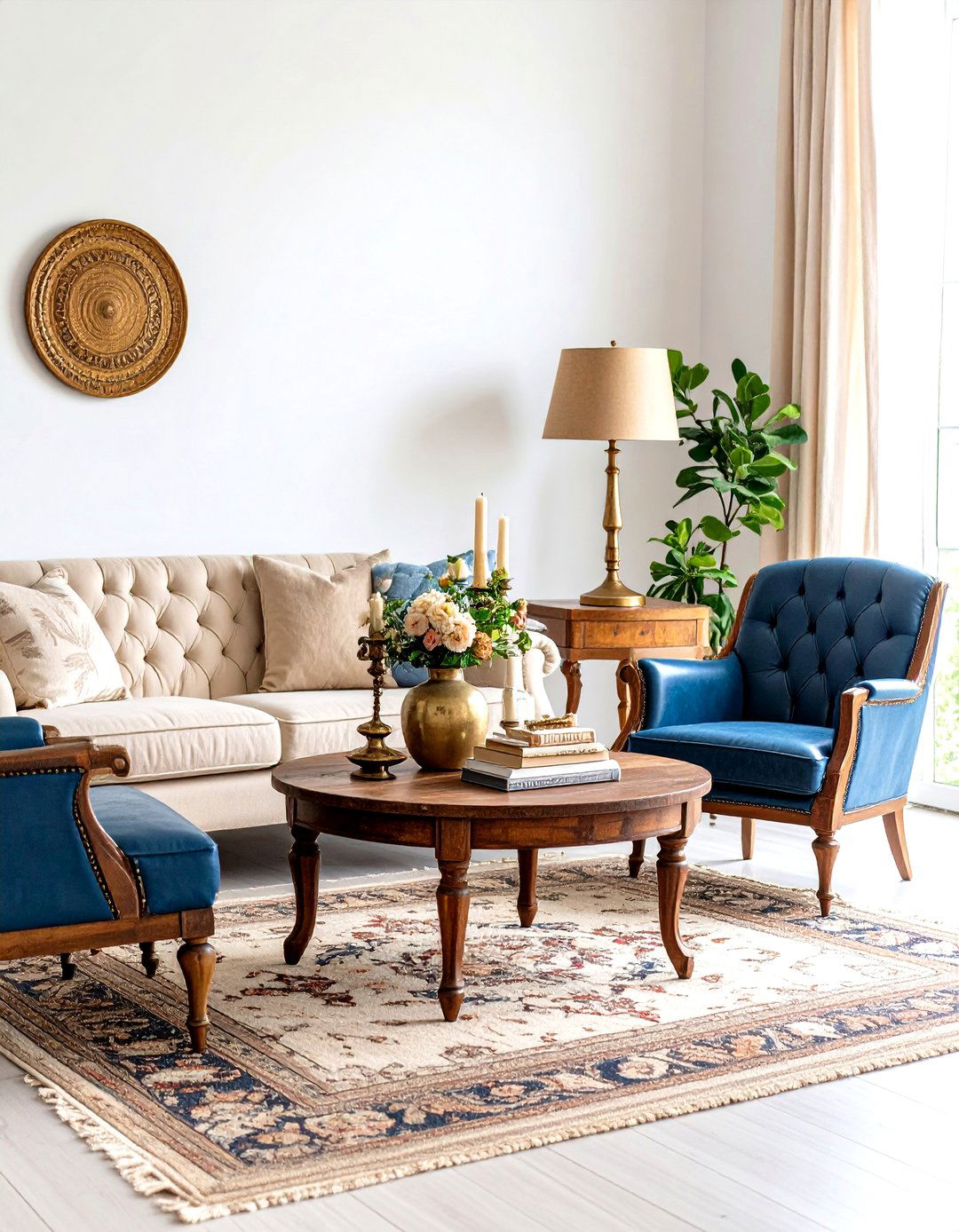


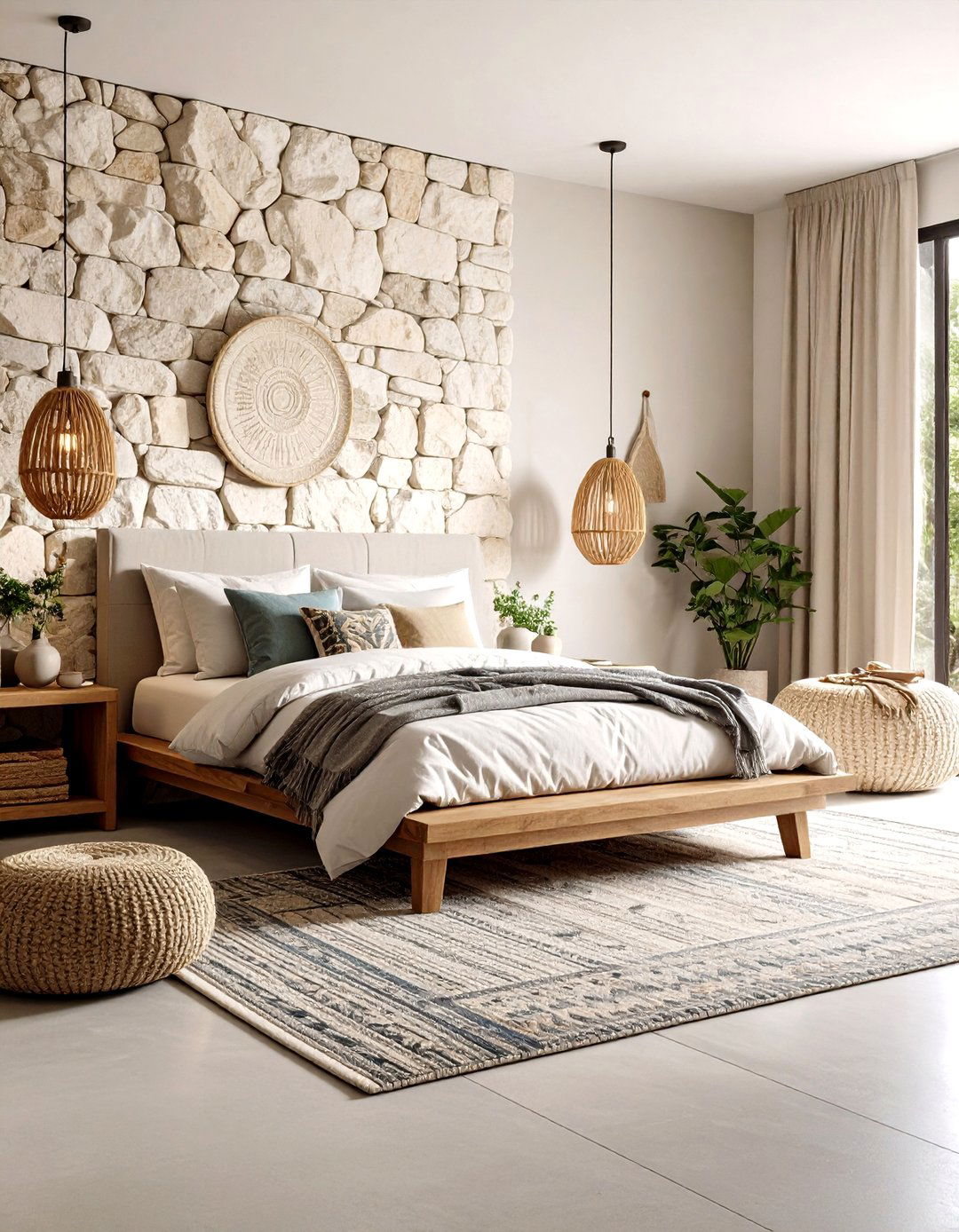
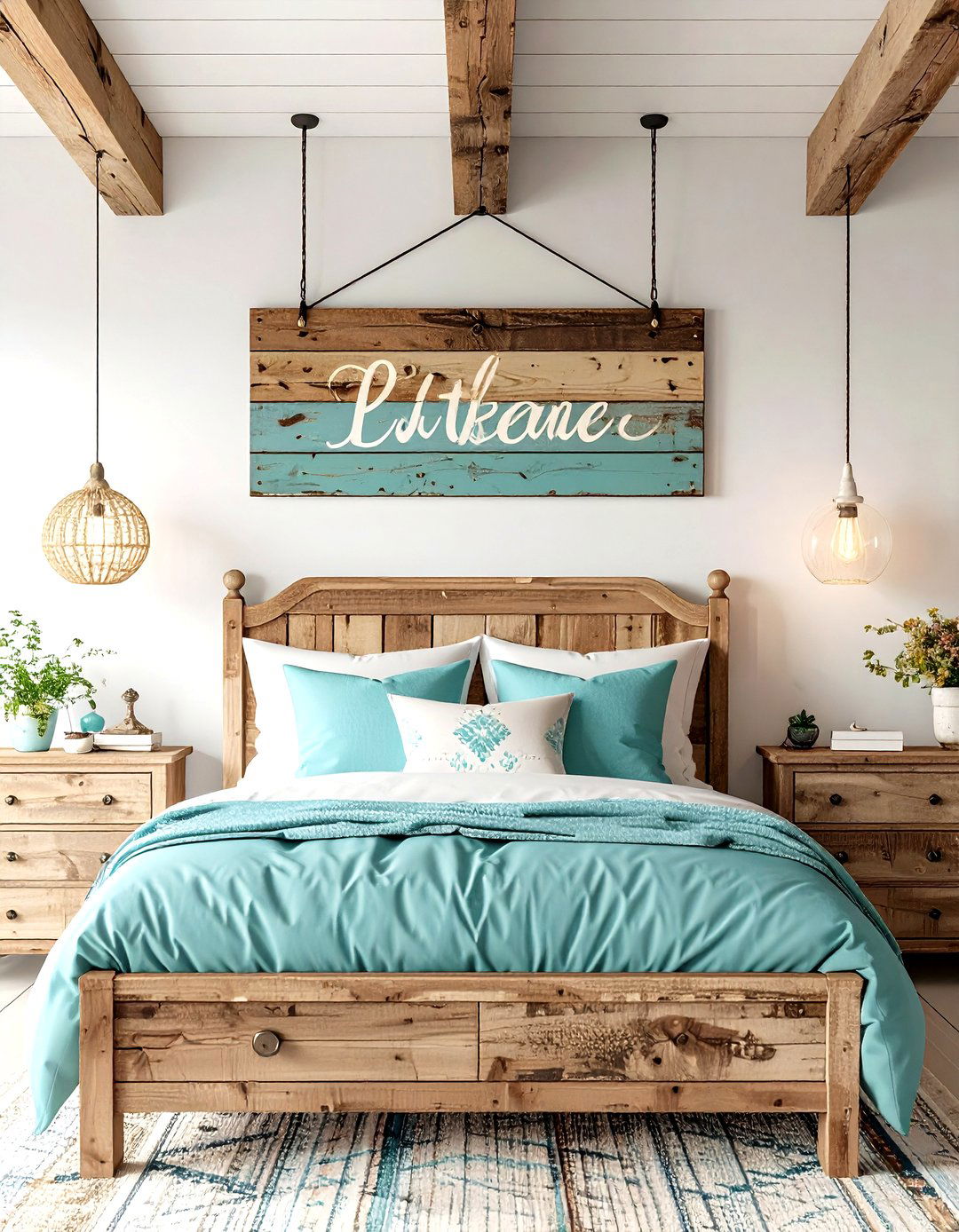
Leave a Reply